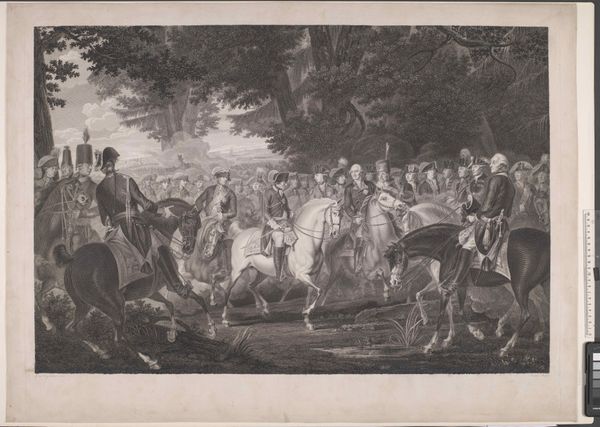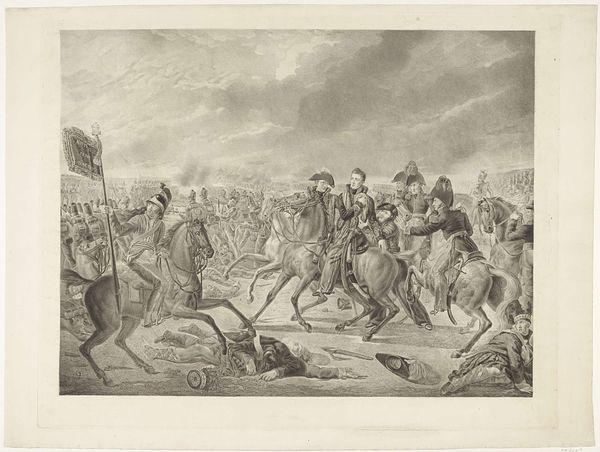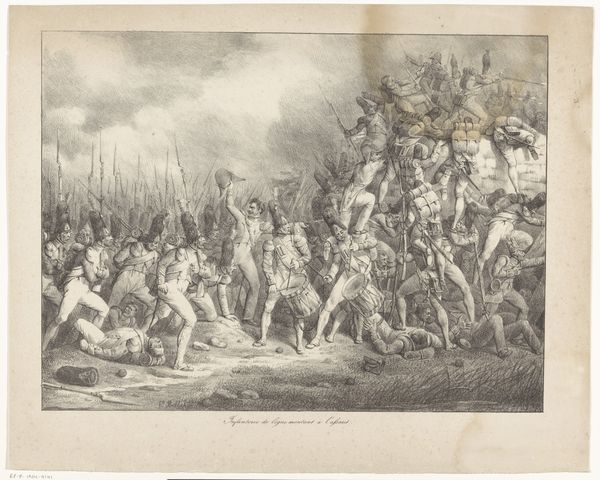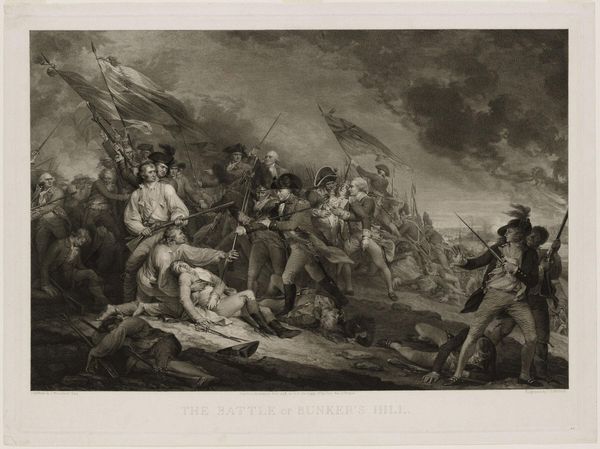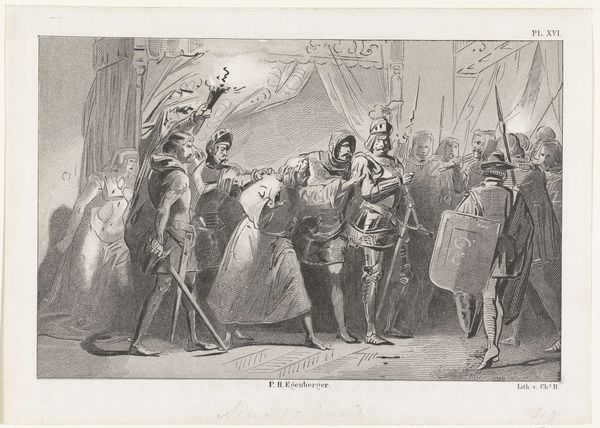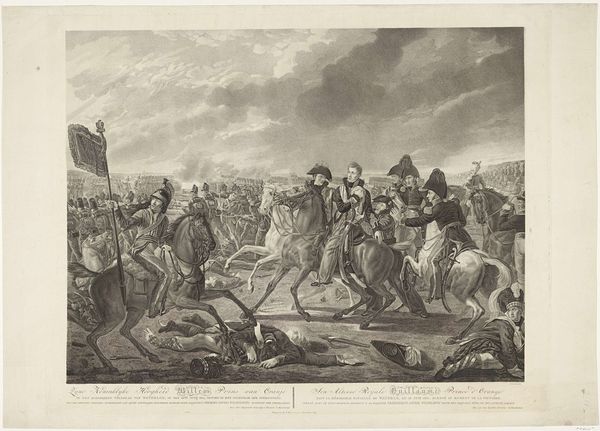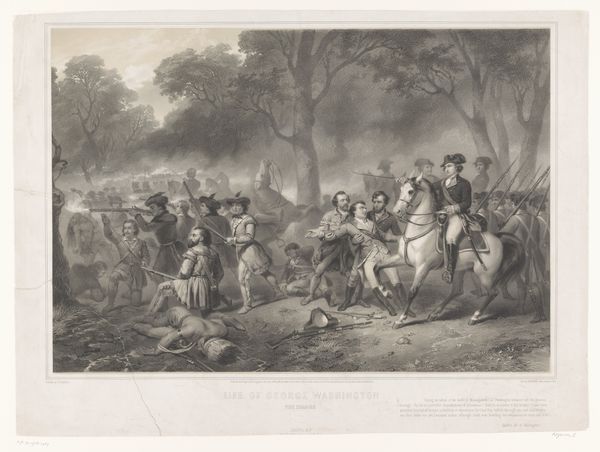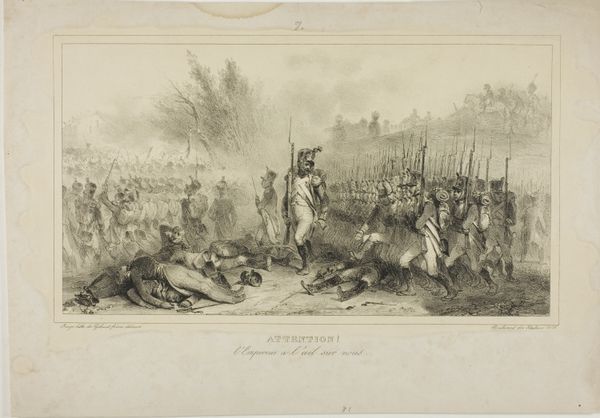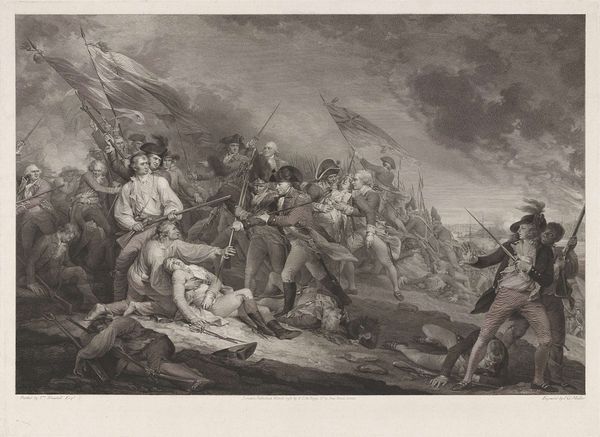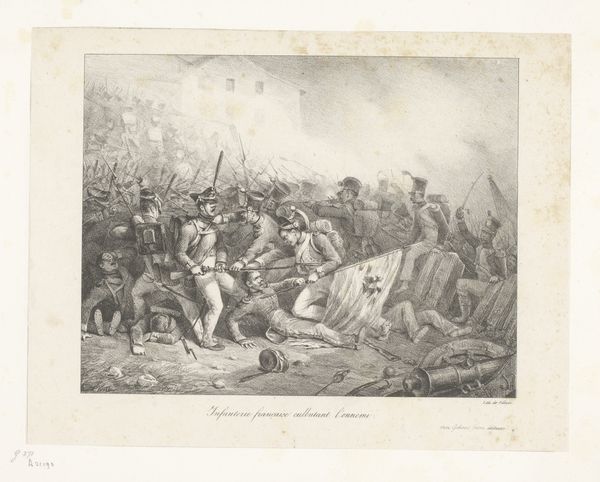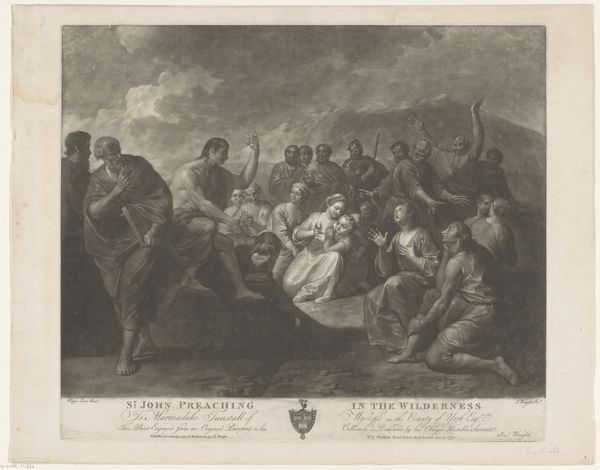
Napoleon I Bonaparte ontvangen door het 5e Regiment in Grenoble, 07-03-1815, na zijn vlucht van Elba 1815 - 1851
0:00
0:00
print, engraving
#
portrait
#
pencil drawn
#
light pencil work
#
narrative-art
# print
#
pencil sketch
#
charcoal drawing
#
figuration
#
charcoal art
#
pencil drawing
#
romanticism
#
19th century
#
history-painting
#
engraving
Dimensions: height 728 mm, width 589 mm
Copyright: Rijks Museum: Open Domain
Curator: At first glance, I see an almost chaotic celebration captured in monochrome. There's a dynamic energy here. What's the story behind this scene? Editor: This is an engraving titled "Napoleon I Bonaparte ontvangen door het 5e Regiment in Grenoble, 07-03-1815, na zijn vlucht van Elba." It was created sometime between 1815 and 1851 by Vincenz Georg Kininger. It depicts the moment Napoleon returns from exile, greeted by the 5th Regiment in Grenoble. It’s interesting to consider the date range, made at the intersection of political shift and Romantic sensibility. Curator: Exile and return – those are powerful archetypal themes. The figures reaching for him, their expressions…they recall images of triumph, not necessarily liberation. What does this specific depiction tell us about the iconography of Napoleon at this time? Editor: I see the work functioning as a powerful propaganda tool, crafted to re-establish his image after a significant political and military defeat. We’re looking at a very deliberate construction of Napoleon as a messianic figure, returned to lead his people. He's not depicted as a weary exile, but a vital leader. The artist deliberately uses techniques associated with Romanticism to further ennoble the scene, a subtle interplay between politics and emotions. Curator: Absolutely. The light seems to focus almost entirely on Napoleon, casting his supporters into relative shadow. Even his posture, hand raised, seems deliberately messianic, a visual claim to authority and almost divine right. It evokes historical and biblical art where figures are always represented with those same poses when conveying messages to the crowds. Editor: Consider also the overturned drum in the foreground, perhaps symbolizing the disruption his absence caused. There is almost this visual return to order. Furthermore, how the depiction of Napoleon conveniently skips over the bloodshed and social upheaval that marked his reign, instead highlighting loyalty and admiration from those who brought him to power. This romanticization is evident of the larger identity narrative he curated of himself, his soldiers, and their place in a restored French, imperialist landscape. Curator: So the drum becomes a powerful symbol not just of Napoleon’s return to France but to past glories. This work uses romantic visual language to create Napoleon as a triumphant symbol. Thank you for shedding light on those historical underpinnings. Editor: And thank you for reminding us about those universal narratives. It’s those deeper structures that allow political images like these to take hold in the public imagination.
Comments
No comments
Be the first to comment and join the conversation on the ultimate creative platform.
